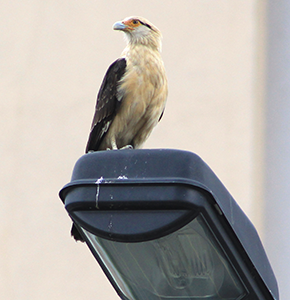A Picture’s Worth a Thousand Birds: Wildlife Photography Highlight of Year
 By Brian Kluepfel
By Brian Kluepfel
This was the year that really flipped us the bird, but 2020 is nearly over. A deadly virus combined with incalculable human hubris and selfishness has brought us to a frightening point, and I’m frankly glad to be alive.
This column, ultimately, is about connecting people to birding, and I’m sorry so many hundreds of thousands will never have that opportunity again.
Humanity and wildlife – forever linked in the chain of life – have reason for slight optimism, however. The non-human ecosystem actually has done well during the pandemic, given that the normal level of disturbances that often harm wildlife was drastically reduced, such as carbon emissions and vehicular traffic. We were forced to leave nature alone, and this was a good thing.

On the human side of the equation, vaccines are being developed, and while we await them, many people are finally taking the coronavirus seriously enough to take precautions to protect themselves and others. Under the new administration in 2021, I’m sure more care will be taken to protect the environment, and greener solutions to problems are more likely.
One thing I was fortunate enough to do this year before the world went completely mad was to visit my wife’s native country, Colombia. I met my in-laws and extended family for the first time. I had wonderful food. And, of course, being one of the most avian-dense places in the world, we saw a lot of birds, by attending the annual Colombia Bird Fair in Cali. We also visited some other sites around the country.
We saw multicolored tanagers, we saw green honeycreepers, we saw crimson-rumped toucanets. Lots of different hummingbirds in a country that boasts 73 species.
Near a golf course, we saw blue-headed parrots. In the mountains near Salento, we saw an incredible sight – the Andean condor – Colombia’s national bird and the largest flying bird (by weight and wingspan) in the world. The condor andino had a wingspan of nearly 10 feet; I was gobsmacked to see something that big and from pretty close up, too.
Along the hot, sunny shoreline of Cartagena, we saw huge brown pelicans trawling for fish, and magnificent frigatebirds scissoring the air. A laughing falcon took us by surprise, surveying a 51st-floor bar where we were sipping cocktails.
Finally, just outside Mama Lucia’s apartment (my mother-in-law), a beautiful yellow-headed caracara took up residence on a light pole. This is a reminder, as “urban birder” David Lindo told us at the bird fair, “just look up. You’ll see birds.” True, everywhere.
So we’ll take our photos from Colombia to Saw Mill River Audubon’s annual members-only exhibition this Thursday, Dec. 10 (via Zoom, of course). While we’ll miss the usual cookies, punch and face-to-face conversation with our friends, we’ll get to see that there were some bright spots in a dark year, and that there is indeed light at the end of the tunnel.
Brian writes for Lonely Planet travel publications and Birdwatching Magazine and edits the Saw Mill River Audubon newsletter. Catch him at www.birdmanwalking.com.

